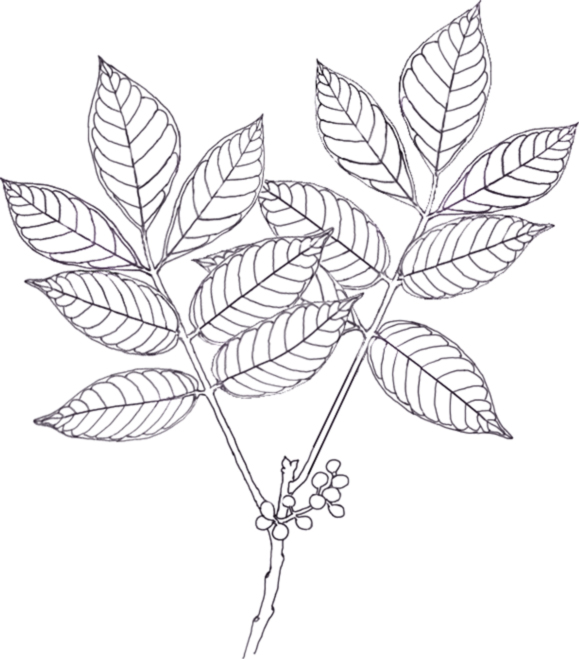
Gumbo Limbo – Bursera simaruba
Description: Tree growing up to 75’ tall. Trunk is dark green in early spring, turning red with time, with thin, shaggy peeling red bark. Leaves consist of a stem with 5-7 leaflets, each 2”-5” long, flowers are yellowish to greenish and fragrant, fruit is round and red-tinged, 3-5” in diameter.
Where to find: in primary and disturbed forests, sometimes used as living fence posts.
TRADITIONAL USES:
Make a tea to use externally:
• As an antidote to blistering, swelling, itching and discomfort on skin exposed to poisonwood sap.
• to soothe insect bites, sunburn, rashes, skin sores, measles.

Tea is used internally:
• As a drink for internal and urinary tract infections, fevers, sun stroke, colds and flu.
• for kidney ailments and pain, use stronger version, see recipes below.
• to combat anemia
• as a tonic for the weak and elderly
Wrap the forehead with leaves to reduce headaches.
Preparation: With a machete, remove a 12” vertical strip of bark, including red shaggy bark and the living bark beneath, peeling off a piece about ¼” to ½” thick. Remove bark from a branch if possible, rather than the trunk. Do not damage the tree any more than necessary, and if removing more than one piece, be careful to not girdle the tree or branch (remove bark all the way around). If possible, go on to another tree rather than damage a single tree extensively. The tree will heal in about 90 days if care is taken in removing bark strips.

Tea for external and general internal use is made by boiling a strip of bark 1 ½” x 12” in one gallon of water for ten minutes. This can be reused and made stronger by adding another strip of bark and boiling again for ten minutes. Locals use this regularly.